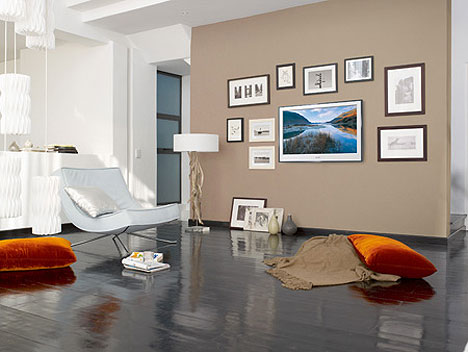
Tokyo, Japan, Apr 15, 2008 - (JCN Newswire) - Panasonic, the leading brand by which Matsushita Electric Industrial Co., Ltd. is known, today announced it has developed a home-use polymer electrolyte fuel cell (PEFC) cogeneration system. The cogeneration system features the world's highest power-generating efficiency of up to 39% Lower Heating Value(LHV), durability of 40,000 operation hours and 4,000 start-stop times, and a predicted lifetime of over 10 years.
Panasonic has strived to achieve its vision of "living in harmony with the environment." With this goal as a motivator, the company has now developed a home-use fuel cell cogeneration system that is planned for early commercialization as a next-generation energy supply system.
Based on the results of large-scale field testing conducted between fiscal 2006 and fiscal 2008**, a new system has been developed with upgraded energy-saving features and enhanced reliability. Further field testing is scheduled in fiscal 2009 ending March 31, 2009.
When installed in an ordinary household, the new system can reduce primary energy consumption by 22% (about 1.4 times more than the conventional system) and can cut CO2 emissions by 12% based on the basic unit for all power sources. With year-round operation, it can save 3,262 kWh of primary energy and reduce CO2 emissions by 330 kg. The new system
can reduce CO2 emissions by 37% based on the basic unit for thermal power source. With year-round operation, it can cut CO2 emissions by1,175 kg.
The three-year field tests also found that the system was often operated in a power output range between 500 W and 1 kW in ordinary households. Within this practical use range, the new system has achieved drastically improved power-generating efficiency compared to conventional systems. The Panasonic system has achieved the world's highest power-generating efficiencies 39% (LHV) at 750 W; 38% or higher in the 500 W - 1 kW range and 34% at 300 W. The system has also satisfied durability requirements for home-use equipment.
In the conventional system, the fuel processing device is not as efficient and inverter efficiency drops toward its lower output ranges. As a result, the power-generating efficiency of the conventional system is the highest at its higher ratings, and falls with decreasing output.
Panasonic has made the system feasible by using cell stack technology that employs highly-durable Membrane Electrode Assemblies (MEA), fuel processing technology that allows stable operation in a wide range at high efficiency and low-loss boost inverter technology.
Panasonic will install production equipment for the new system in its plant in Kusatsu City, Shiga Prefecture, and will start manufacturing from June this year. In fiscal 2010, further investments will be made to start a full-scale commercialization of this system as a new environmental business that creates a new energy source.
JCNNetwork.



